Life at the Bottom of the Food Chain
Life at the Bottom of the Food Chain
Last Saturday D. and I went to the Don Edwards San Francisco Bay National Wildlife Refuge to learn about the dynamics of the microbial communities in the ponds of La Riviere Marsh.
Wetlands microbes are often called the lungs of the Earth because of the oxygen they produce and the carbon dioxide they take up. Microbiologist Wayne began with a brief presentation in the Visitor Center about the various types of salt marsh microbes. We also learned how the tides influence the microbial communities by varying the salinity levels, making conditions optimal for a wide range of organisms with slightly different but closely-related salt-level tolerances. Then we went on a hike to the marsh where we took samples of some of the most ancient creatures on Earth to view using field microscopes at the side of the trail.
Here are some pics D. took (my camera is in the shop).
A field guide to bacteria.
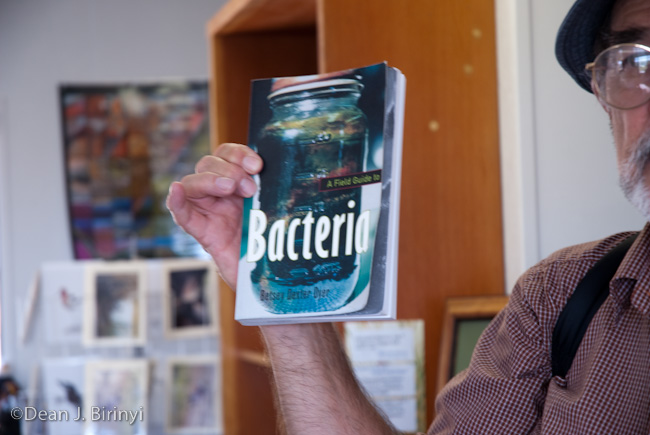
Yes, there is such a thing. And it's good to have out in the field when you don't have a microscope with you to identify what you see.
We set off for the ponds we are going to study.
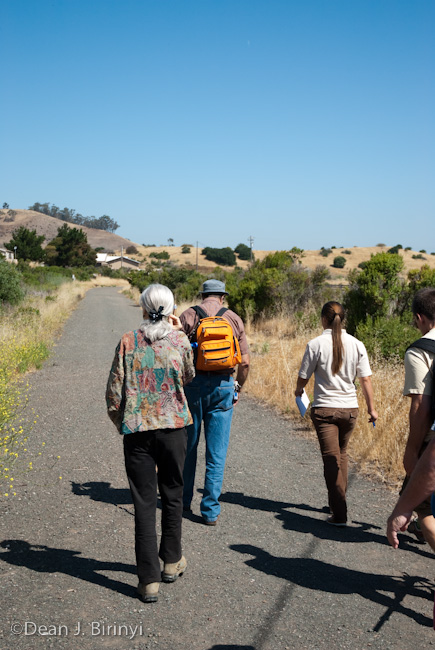
Microbiologist Wayne.
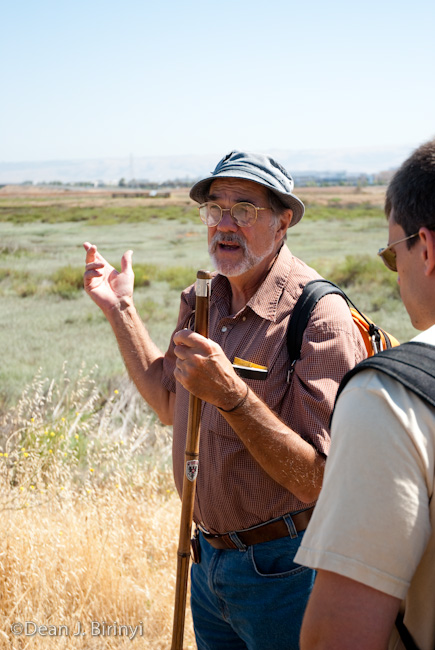
A pond with dead, dried-up algae and fresh algae.
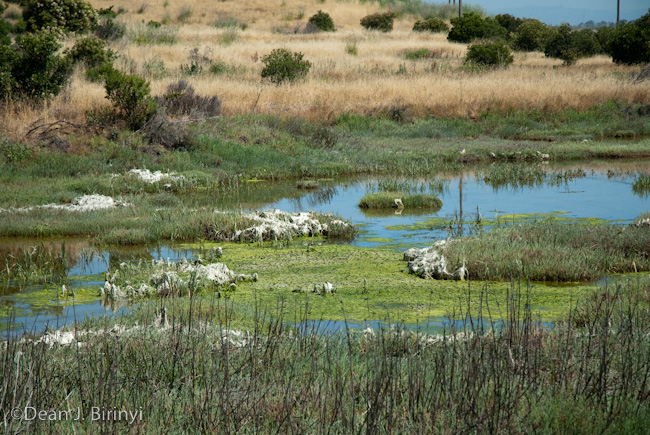
A pond with diatom scum. The brown stuff is dead and dying red algae.
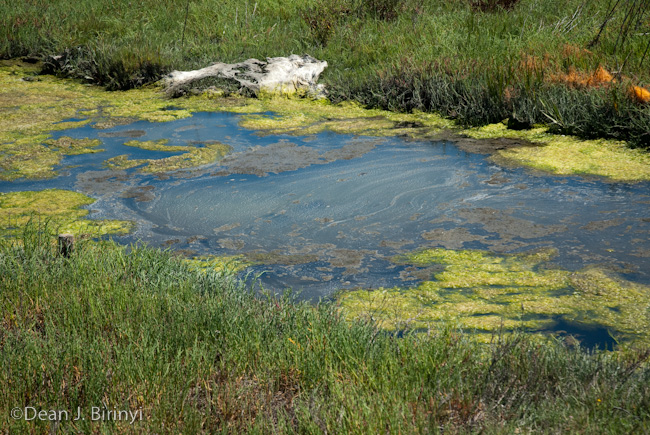
The white stuff is what's left of an earlier springtime algae bloom that flourished in the marsh after the winter rains.

Microciologist Wayne gets one of the field microscopes set up on a tripod.
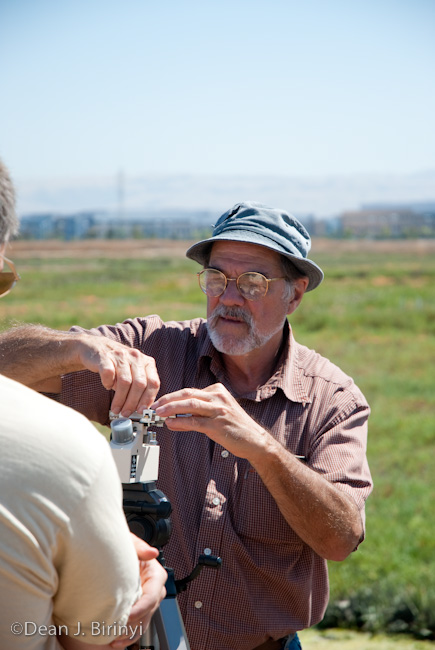
Microbiologist Wayne uses his hiking staff to assist with collecting a sample of goo from a pond.

Let's see, what have we here?
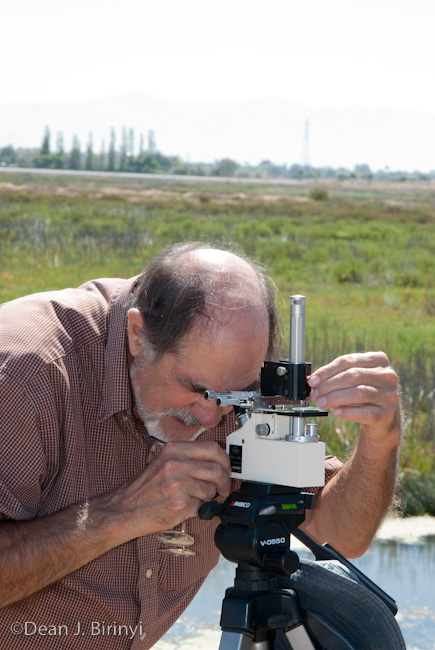
Thar be critters! Teeny-tiny itty-bitty single-celled critters!

Bubbles mean oxygen is being produced.
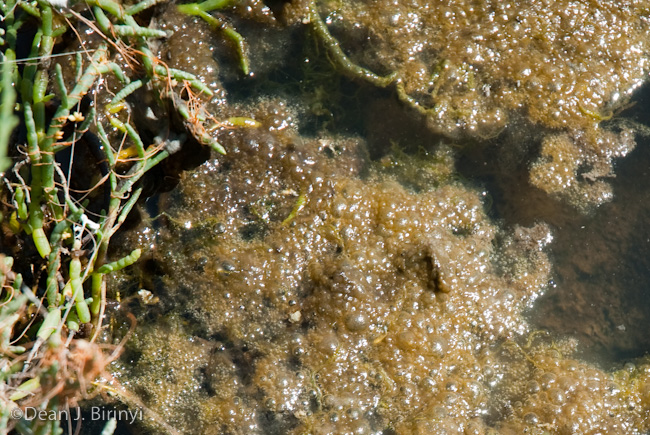
One of the ponds we studied in La Riviere Marsh.
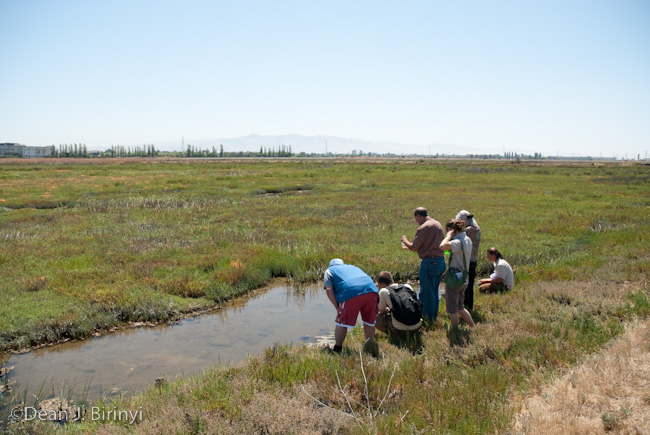
Microbiologist Wayne adjusts the second field microscope.
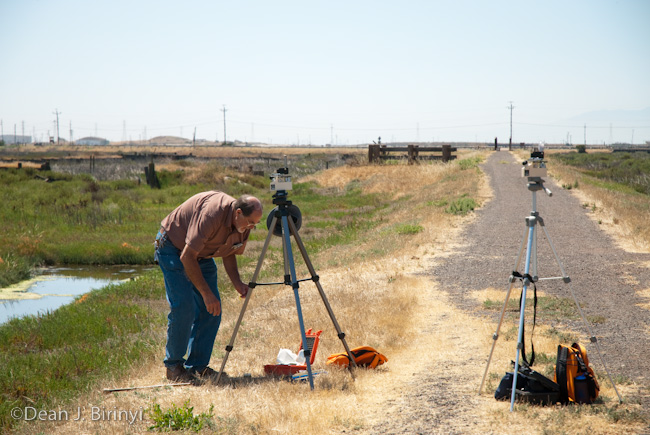
Everything he needs (minus the tripods) can be packed up in 2 small backpacks.
Microbiologist Wayne and one of the wildlife refuge volunteers.
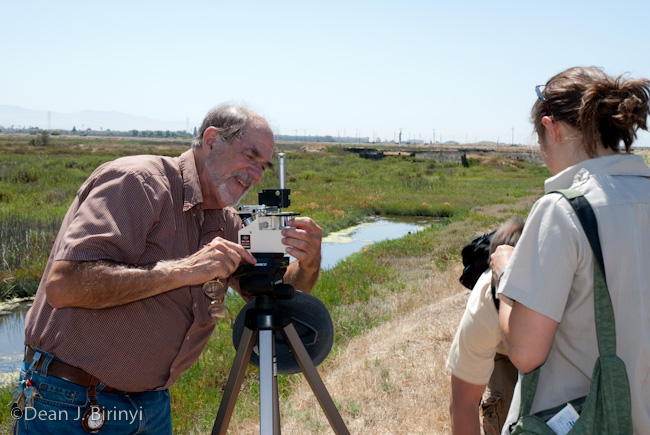
A squadron of white pelicans soars overhead of our field station in the marsh.
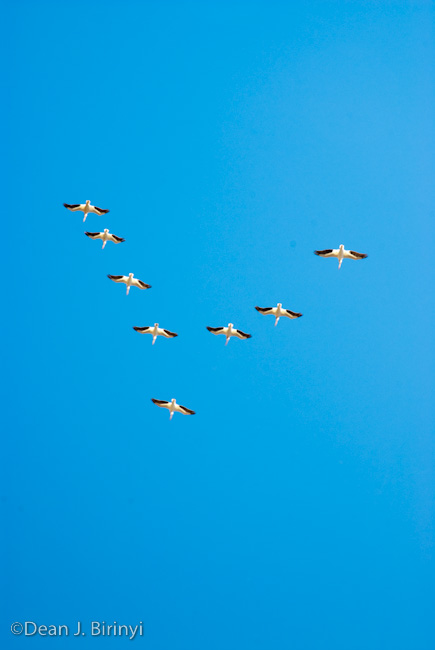
Microbiologist Wayne uses a pipette to gather up some gunk from a second pond in the marsh.
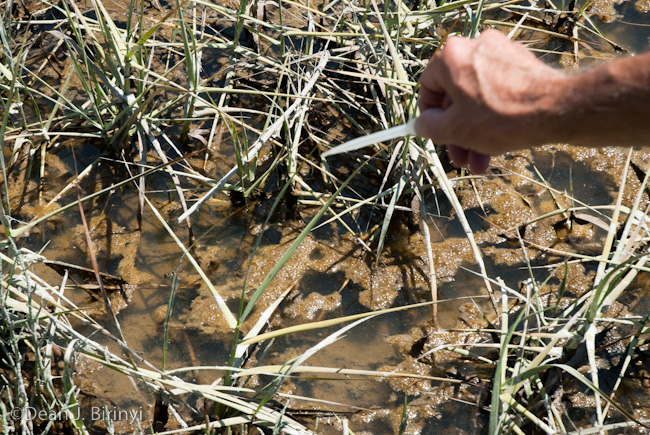
The brown gunk clings to the plant stems. It's gritty, not slimy, because it's made up of diatoms with glassy, silicaceous shells.
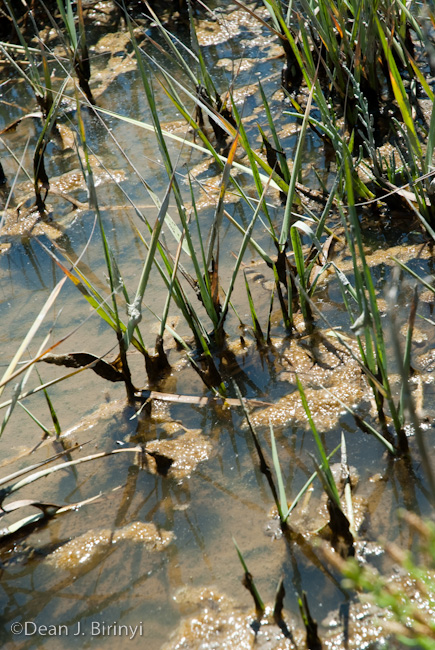
Studying algae requires teamwork.
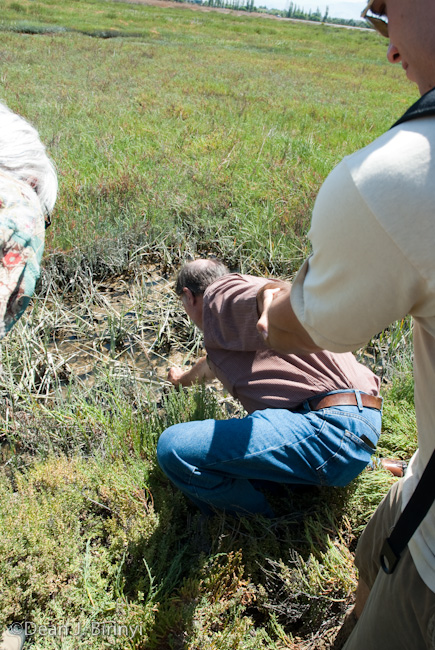
One of our group hangs onto Microbiologist Wayne as he leans way over the edge of the pond to grab another scummy sample.
Microbiologist Wayne finds a higher life form while packing up the field microscopes.
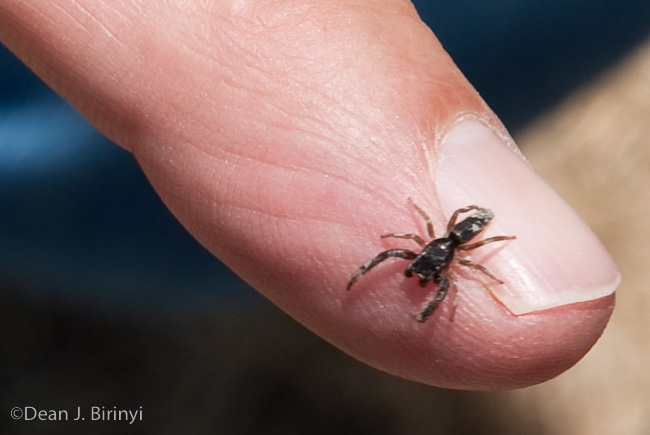
I'm going to go out on a limb here and guess it's a jumping spider from the Marpissa genus.
Microbiologist Wayne explains the differences between cyanobacteria, rotifers, paramecia, dinoflagellates and diatoms, all of which I've forgotten.
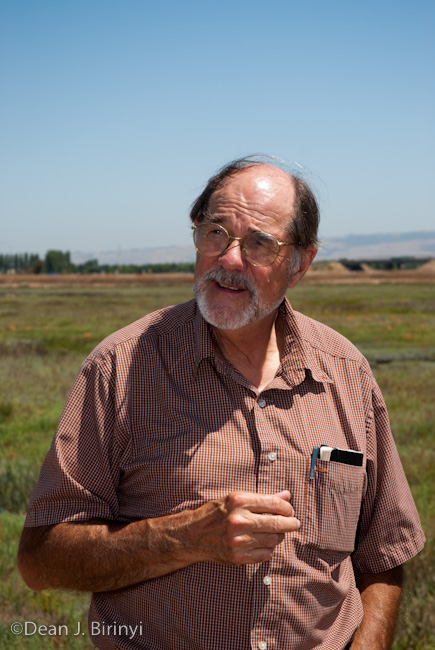
But I do remember that most of the oxygen on Earth comes not from trees but from cyanobacteria.
So if you appreciate breathing, hug some algae today!
.
Last Saturday D. and I went to the Don Edwards San Francisco Bay National Wildlife Refuge to learn about the dynamics of the microbial communities in the ponds of La Riviere Marsh.
Wetlands microbes are often called the lungs of the Earth because of the oxygen they produce and the carbon dioxide they take up. Microbiologist Wayne began with a brief presentation in the Visitor Center about the various types of salt marsh microbes. We also learned how the tides influence the microbial communities by varying the salinity levels, making conditions optimal for a wide range of organisms with slightly different but closely-related salt-level tolerances. Then we went on a hike to the marsh where we took samples of some of the most ancient creatures on Earth to view using field microscopes at the side of the trail.
Here are some pics D. took (my camera is in the shop).
A field guide to bacteria.

Yes, there is such a thing. And it's good to have out in the field when you don't have a microscope with you to identify what you see.
We set off for the ponds we are going to study.

Microbiologist Wayne.

A pond with dead, dried-up algae and fresh algae.

A pond with diatom scum. The brown stuff is dead and dying red algae.

The white stuff is what's left of an earlier springtime algae bloom that flourished in the marsh after the winter rains.

Microciologist Wayne gets one of the field microscopes set up on a tripod.

Microbiologist Wayne uses his hiking staff to assist with collecting a sample of goo from a pond.

Let's see, what have we here?

Thar be critters! Teeny-tiny itty-bitty single-celled critters!


Bubbles mean oxygen is being produced.

One of the ponds we studied in La Riviere Marsh.

Microbiologist Wayne adjusts the second field microscope.

Everything he needs (minus the tripods) can be packed up in 2 small backpacks.
Microbiologist Wayne and one of the wildlife refuge volunteers.

A squadron of white pelicans soars overhead of our field station in the marsh.

Microbiologist Wayne uses a pipette to gather up some gunk from a second pond in the marsh.

The brown gunk clings to the plant stems. It's gritty, not slimy, because it's made up of diatoms with glassy, silicaceous shells.

Studying algae requires teamwork.

One of our group hangs onto Microbiologist Wayne as he leans way over the edge of the pond to grab another scummy sample.
Microbiologist Wayne finds a higher life form while packing up the field microscopes.

I'm going to go out on a limb here and guess it's a jumping spider from the Marpissa genus.
Microbiologist Wayne explains the differences between cyanobacteria, rotifers, paramecia, dinoflagellates and diatoms, all of which I've forgotten.


But I do remember that most of the oxygen on Earth comes not from trees but from cyanobacteria.

So if you appreciate breathing, hug some algae today!

.